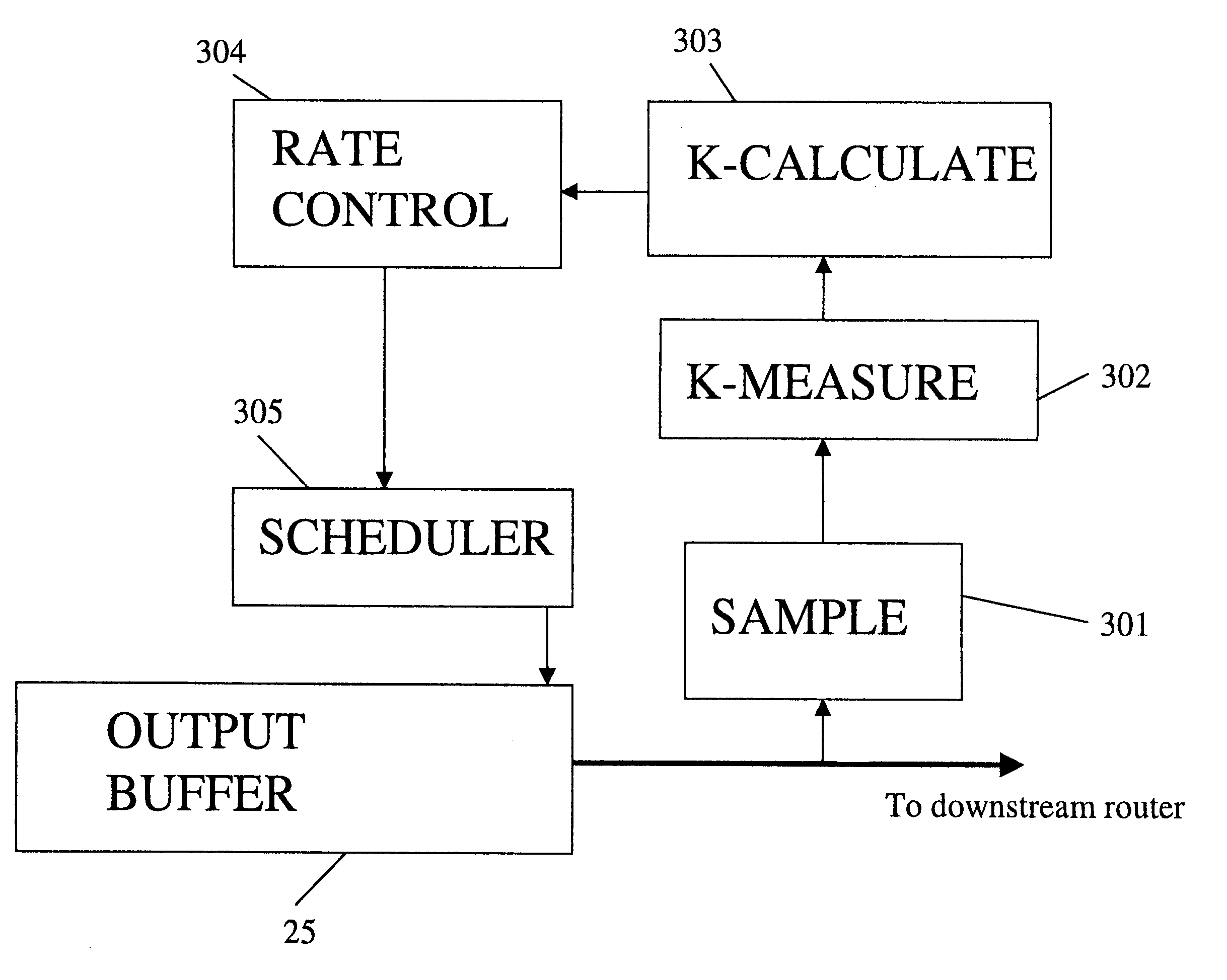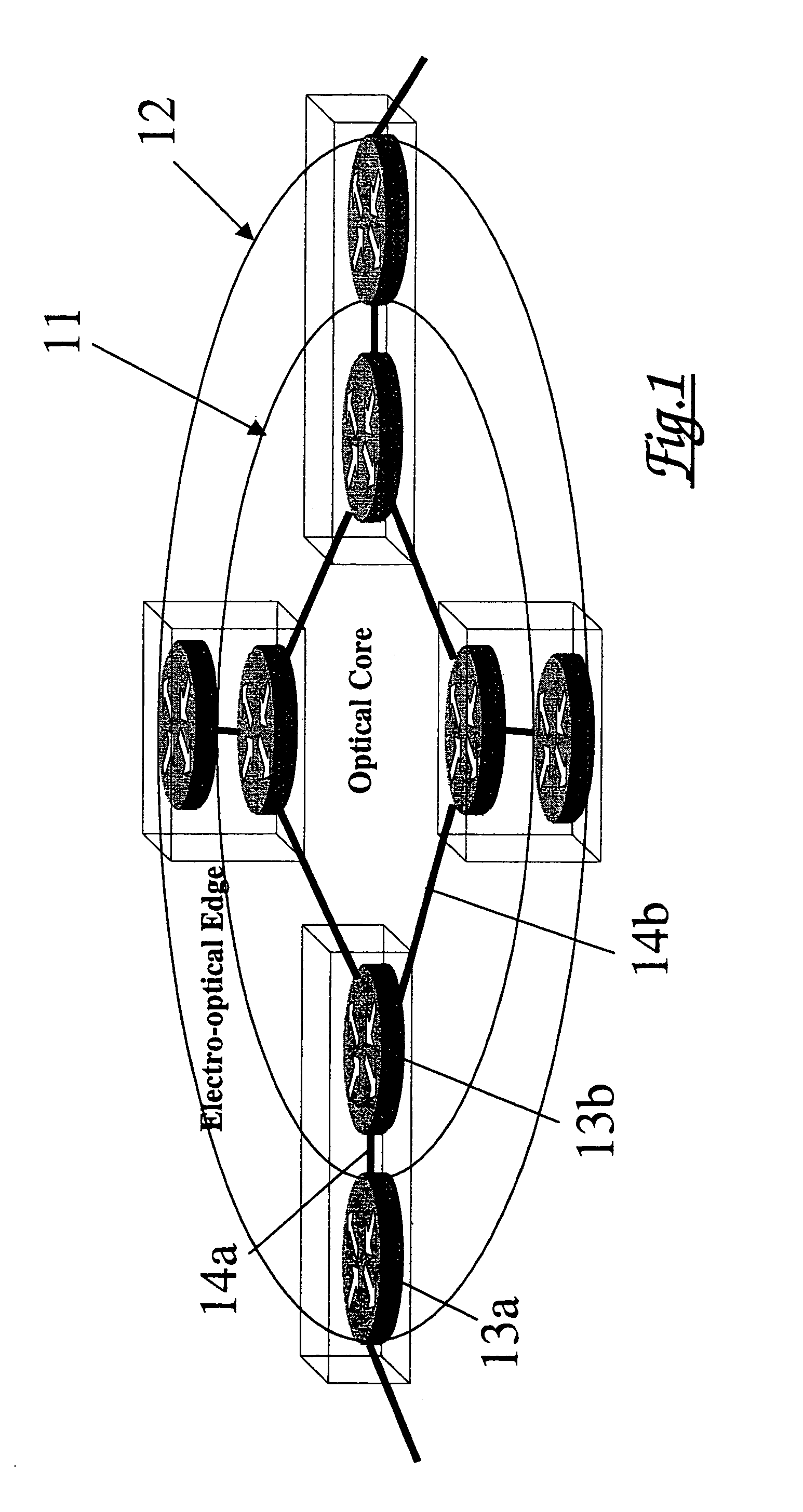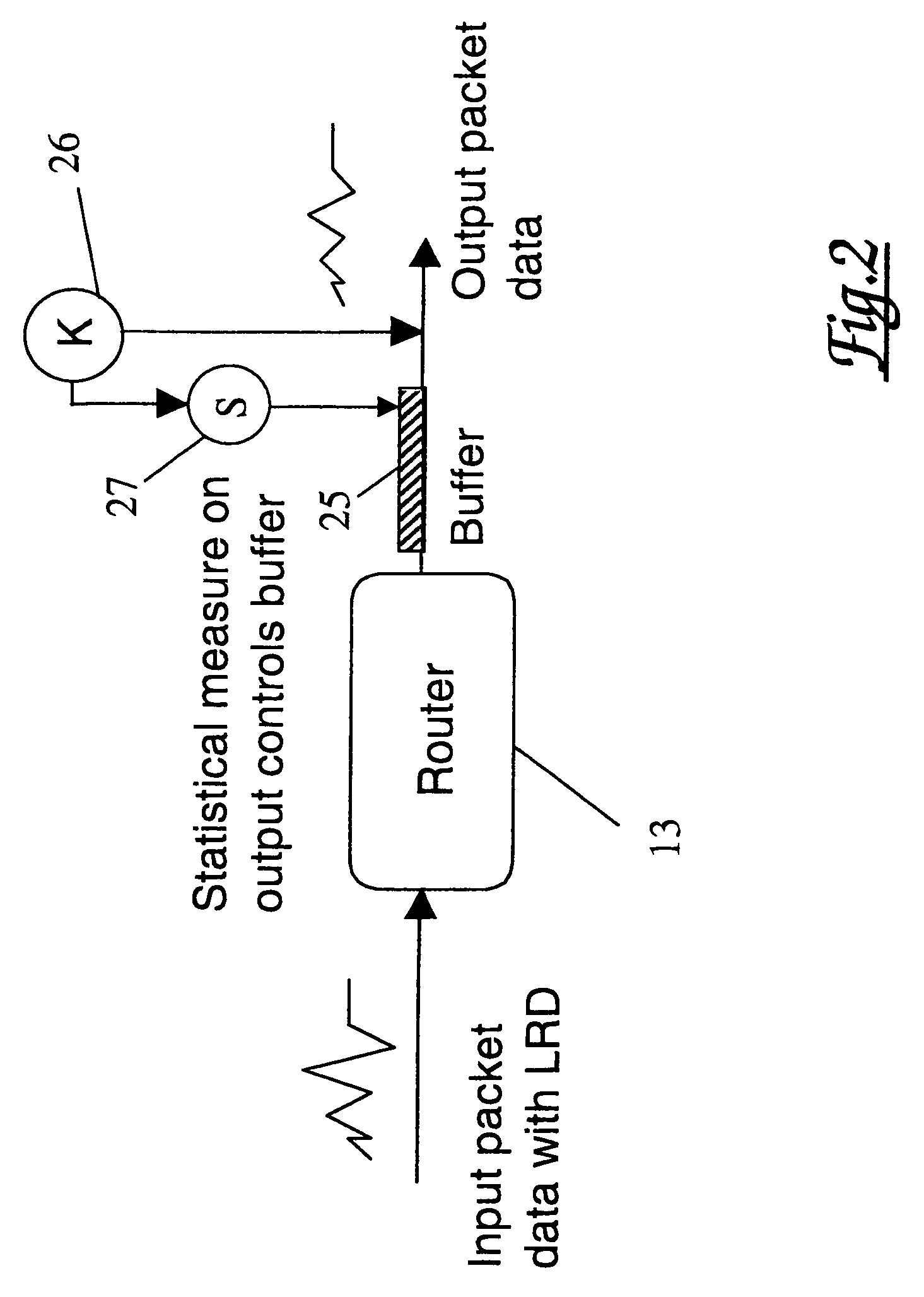Reducing network traffic congestion
- Summary
- Abstract
- Description
- Claims
- Application Information
AI Technical Summary
Benefits of technology
Problems solved by technology
Method used
Image
Examples
Embodiment Construction
[0050]Referring first to FIG. 1, this shows in highly schematic form the construction of an exemplary packet communications network comprising a core network 11 and an access or edge network 12. Both the core and edge network are each constituted by a plurality of nodes or routers 13a, 13b interconnected by connections links 14a, 14b typically, the core network transports traffic in an optical domain, and the core links 14b comprise optical fibre paths. Advantageously, routing decisions in the network of FIG. 1 are made at the network edge 12 so that, when a packet is despatched into the core network, a route has been defined and resources have been provisionally reserved.
[0051]It will be understood that the network of FIG. 1 will typically comprise a multilayer structure in which an underlying optical transport layer serves an IP (Internet protocol layer constituted by the routers. The network may include one or more further layers, e.g. an MPLS (multiprotocol label switched) layer...
PUM
 Login to View More
Login to View More Abstract
Description
Claims
Application Information
 Login to View More
Login to View More - R&D
- Intellectual Property
- Life Sciences
- Materials
- Tech Scout
- Unparalleled Data Quality
- Higher Quality Content
- 60% Fewer Hallucinations
Browse by: Latest US Patents, China's latest patents, Technical Efficacy Thesaurus, Application Domain, Technology Topic, Popular Technical Reports.
© 2025 PatSnap. All rights reserved.Legal|Privacy policy|Modern Slavery Act Transparency Statement|Sitemap|About US| Contact US: help@patsnap.com



